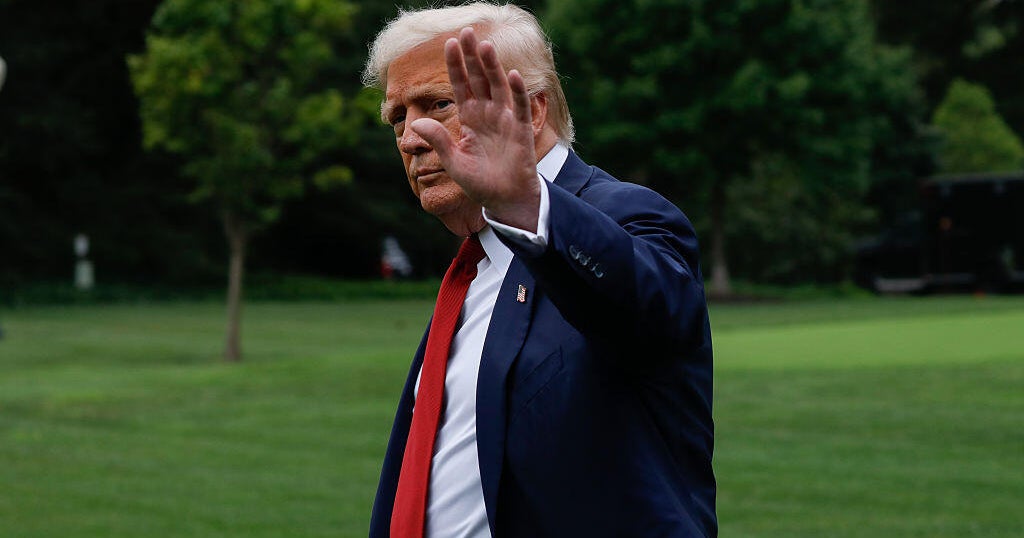A panel of federal judges on Friday limited President Trump’s effort to close the U.S. asylum system at the southern border, saying his administration can’t unilaterally suspend laws that bar the U.S. from deporting migrants to places where they would face persecution or torture.
The ruling centers on a proclamation issued by Mr. Trump just hours after he returned to the White House in January, ordering the closure of the asylum system. U.S. border officials have relied on the order to summarily expel those entering the country illegally, without allowing them to request asylum. Mr. Trump justified the sweeping measure on the grounds that the country is facing an “invasion” of migrants.
The three-judge panel at the U.S. Court of Appeals for the D.C. Circuit lifted its administrative pause on a July ruling from a federal judge who found Mr. Trump’s proclamation defied U.S. laws that require the federal government to hear the claims of migrants who want to apply for humanitarian protection out of fear that they could be harmed if deported.
That ruling by U.S. District Judge Randolph Moss struck down the Trump administration’s asylum ban and would’ve required officials to stop enforcing it on a legal class comprised of migrants who are or will be in the U.S.
While it lifted its stay on Moss’ ruling, the D.C. Circuit panel also narrowed his order, limiting the class members eligible for relief to asylum-seekers already on American soil while Mr. Trump’s decree is in effect. The appellate court also limited the scope of Moss’ ruling, partially granting a request from the Trump administration.
The panel allowed the Trump administration to continue using the president’s proclamation to deny migrants access to the U.S. asylum system, noting that U.S. law permits, but does not require, the government to grant asylum to those who prove they could be persecuted because of their race, religion, politics or other factors.
But the panel also said Mr. Trump’s proclamation could not be used to prevent migrants from applying for other forms of humanitarian protections that the U.S. is legally required to give to certain migrants fleeing persecution and torture. They’re known as “withholding of removal” and protection under the United Nations Convention Against Torture. Those protections have a higher legal threshold than asylum, but unlike asylum, they are mandatory, not discretionary, and must be granted to those who meet the requirements.
The panel was made up of Circuit Judges Patricia Millett and Cornelia Pillard, who were appointed by former President Barack Obama, as well as Gregory G. Katsas, an appointee of Mr. Trump. Each judge filed their own statements in the case, with Pillard and Katsas disagreeing with some aspects of the ruling.
While they had some disagreements, all three judges said Mr. Trump’s proclamation could not be used to ignore laws around “withholding of removal” or Convention Against Torture protections. Pillard said she would’ve also blocked the administration from denying migrants the right to apply for asylum.
The judges scheduled expedited proceedings to decide the merits of the case, asking both the government and the advocates challenging Mr. Trump’s proclamation to file briefs through Sept. 26.
The lawsuit that triggered Friday’s decision was filed by the American Civil Liberties Union and other advocates, who have denounced the Trump administration’s border crackdown as a draconian policy that has sent migrants to harm’s way.
“The President secured the border in record time at an unprecedented level by using every available legal tool provided by Congress,” Assistant DHS Secretary Tricia McLaughlin told CBS News in a statement on Saturday. “A rogue district judge took those tools away, threatening the safety and security of Americans and ignoring a Supreme Court decision issued only days earlier admonishing district courts for granting nationwide injunctions. The Trump Administration is committed to restoring integrity to our immigration system and to our justice system.”
Trump administration officials have credited the president’s proclamation and other actions — including the deployment of thousands of additional troops to the southern border — for a historic drop in illegal crossings there.
In July, just 4,600 migrants were caught crossing the southern border illegally, the lowest monthly tally recorded by Border Patrol and a figure the Biden administration reported daily during many months. While public monthly reports started in fiscal year 2000, annual data suggest the last time Border Patrol had that level of apprehensions was in the 1960s.




